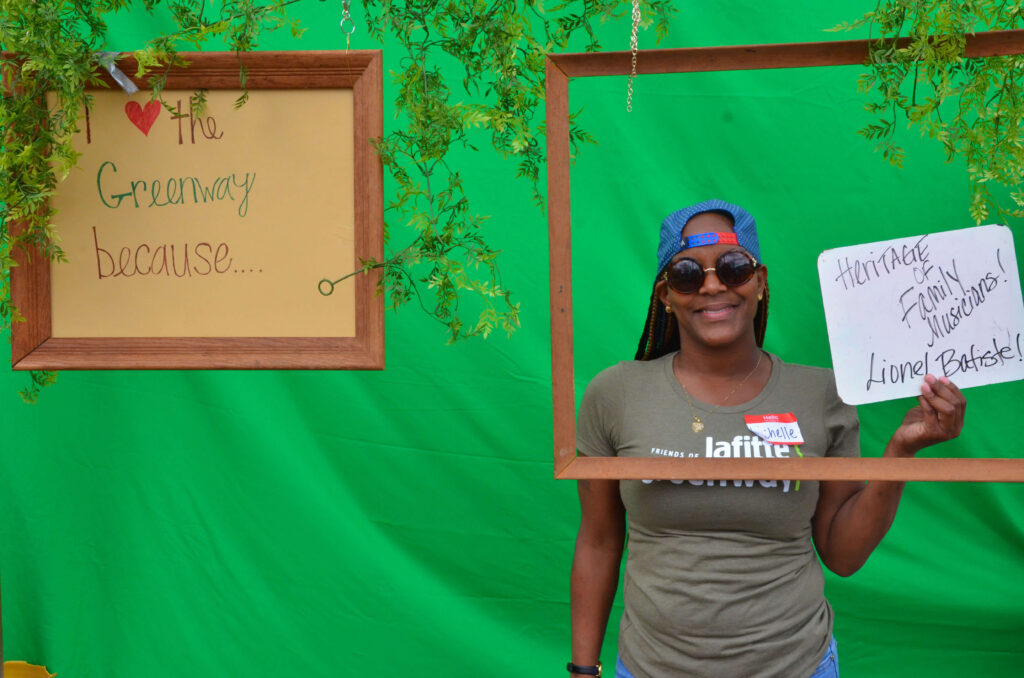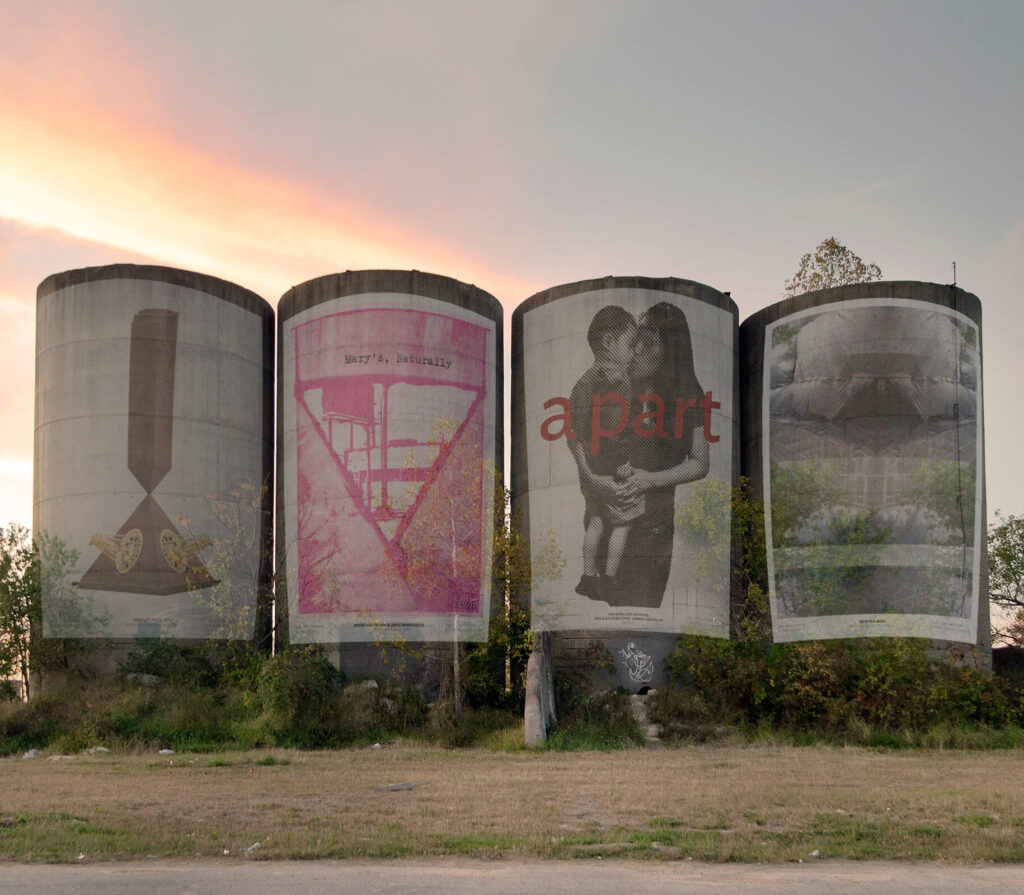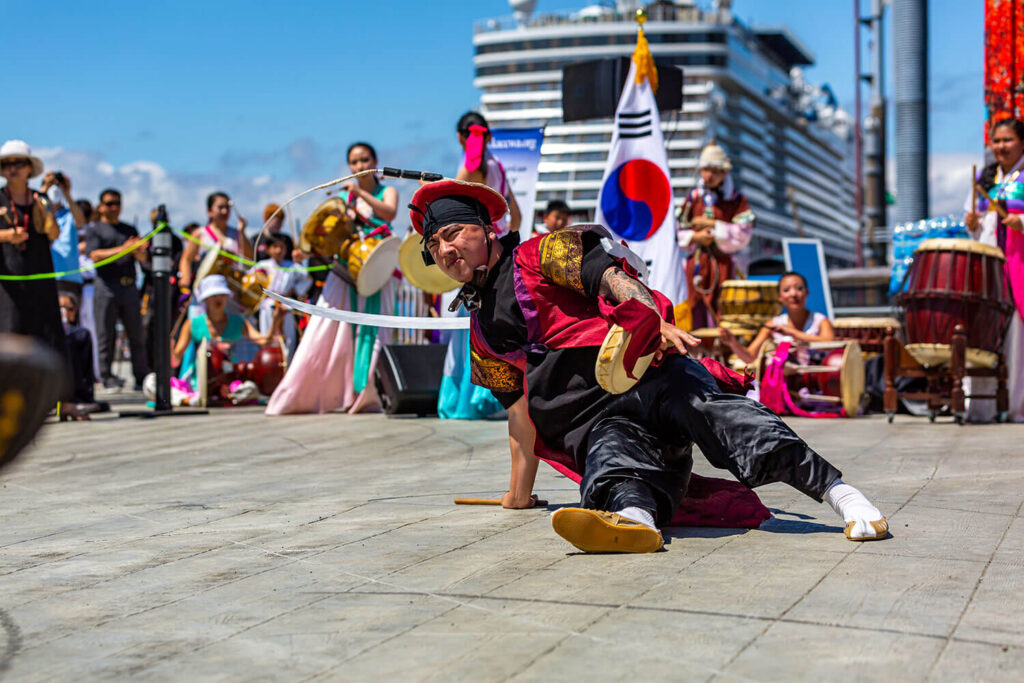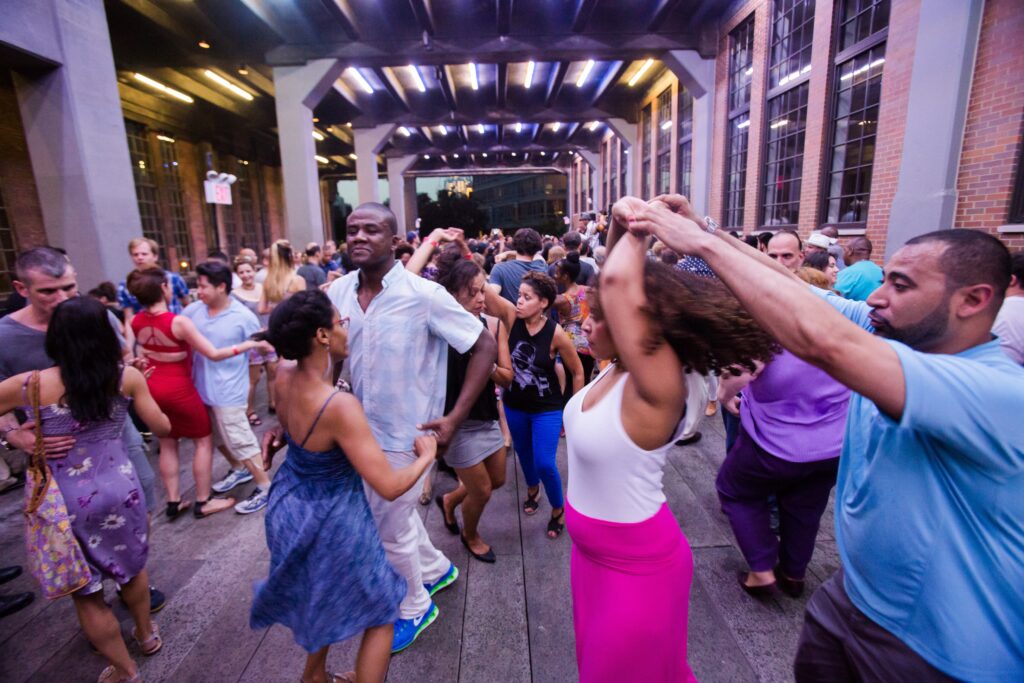Would you like to showcase your own work to embed equity in your infrastructure reuse project?
Setting up a Community Ambassador Program

Event organized by the Community Ambassadors Program in New Orleans. Credit: Lafitte Greenway
The Lafitte Greenway is a bicycle and pedestrian path and linear park that opened in the heart of New Orleans in 2015. The Greenway runs through the historically rich neighborhoods of Treme–the birthplace of jazz–Lakeview, and other affluent areas in the city. However, the early planning process revealed a prevailing perception that the Greenway was just for cyclists and that it wasn’t representatively engaging people across all neighborhoods.
The Greenway took on this engagement challenge, kicking off a Community Ambassadors’ Program. The program started with the determination to build strong relationships. They invested in leaders of diverse racial, ethnic and age groups, who have since steered the organization’s work.
The program, active since 2016, typically recruits five to eight ambassadors each year. For about eight months, activities are planned and led by the community ambassadors, including training, outreach, monthly meetings, and an ambassador-led project. This involves ambassadors working together to solve a specific problem within a set budget. The ambassadors are selected through an open call, followed up by an application process and an interview.
The kickoff training is usually three days long and includes informing participants of the history of the site, walking tours, and updates on green infrastructure features. The program pays the ambassadors $500, out of which $100 are paid after the first training, with subsequent payments of $50 after each meeting. After the immersive training, ambassadors practice leadership and community organizing, guide the organization with feedback on the Greenway programs, and connect neighbors to health, nature, and each other. Ambassadors are encouraged to host conversations with people in the community and in their networks, either informally or through formal surveys.
It’s critical to the success of this program that the organization check in with ambassadors on a monthly basis. Since there is always a need for help with outreach (flyering, tabling, getting the word out about upcoming events), the ambassadors become extra pairs of hands. Whether it’s helping with the Easter Extravaganza event or showing up to local festivals, the ambassadors also build their own leadership skills by furthering the organization’s mission.
Midway through the program, the Ambassadors are encouraged to plan a joint ambassador-led project with $1,000 dollars.The more dialogue is rooted throughout the program, the more meaningful events are. Ambassador-led events have included a crawfish boil while educating the community about green infrastructure, adding lighting or signage to specific parts of the greenway. These events, rooted in local culture and public space enhancements, strengthens the community’s connection to the greenway.
The organization has already accumulated some important learned lessons. Ambassadors don’t enroll for the money, as many don’t cash their checks while others donate the money back to the organization. The key to the success of the program is real and genuine relationship building. Ambassadors recognize and feel they’re being treated with respect, as the executive director and board chair are part of their meetings. The trust they feel for being empowered to build and implement their ambassador-led projects has meant significant shifts in power and in perception of who the greenway was built for.
As successful as programs like this one can be, it’s also worth noting an ambassador program can be challenging for a small staff organization, as they require intensive staffing and outreach. Not all ambassadors have easy or direct ways for being contacted. Meetings require multiple phone calls from a number of staff, for example. A way to cope with low staff capacity has been to bring on former ambassadors. The organization has welcomed “veteran” ambassadors, who continue to volunteer their time to support Greenway activities. They’ve also become spokespersons for the organization.
With more people of color being involved, the program has helped create a stronger connection in the community. It has also led to diversifying the voice of the project, making space for equity and inclusiveness. The legitimacy of the Greenway’s initiatives can be traced directly to the voices on the ground and the involvement of the communities it serves.
The Lafitte Greenway is a bicycle and pedestrian path and linear park that opened in the heart of New Orleans in 2015. The Greenway runs through the historically rich neighborhoods of Treme–the birthplace of jazz–Lakeview, and other affluent areas in the city. However, the early planning process revealed a prevailing perception that the Greenway was just for cyclists and that it wasn’t representatively engaging people across all neighborhoods.
The Greenway took on this engagement challenge, kicking off a Community Ambassadors’ Program. The program started with the determination to build strong relationships. They invested in leaders of diverse racial, ethnic and age groups, who have since steered the organization’s work.
The program, active since 2016, typically recruits five to eight ambassadors each year. For about eight months, activities are planned and led by the community ambassadors, including training, outreach, monthly meetings, and an ambassador-led project. This involves ambassadors working together to solve a specific problem within a set budget. The ambassadors are selected through an open call, followed up by an application process and an interview.
The kickoff training is usually three days long and includes informing participants of the history of the site, walking tours, and updates on green infrastructure features. The program pays the ambassadors $500, out of which $100 are paid after the first training, with subsequent payments of $50 after each meeting. After the immersive training, ambassadors practice leadership and community organizing, guide the organization with feedback on the Greenway programs, and connect neighbors to health, nature, and each other. Ambassadors are encouraged to host conversations with people in the community and in their networks, either informally or through formal surveys.
It’s critical to the success of this program that the organization check in with ambassadors on a monthly basis. Since there is always a need for help with outreach (flyering, tabling, getting the word out about upcoming events), the ambassadors become extra pairs of hands. Whether it’s helping with the Easter Extravaganza event or showing up to local festivals, the ambassadors also build their own leadership skills by furthering the organization’s mission.
Midway through the program, the Ambassadors are encouraged to plan a joint ambassador-led project with $1,000 dollars.The more dialogue is rooted throughout the program, the more meaningful events are. Ambassador-led events have included a crawfish boil while educating the community about green infrastructure, adding lighting or signage to specific parts of the greenway. These events, rooted in local culture and public space enhancements, strengthens the community’s connection to the greenway.
The organization has already accumulated some important learned lessons. Ambassadors don’t enroll for the money, as many don’t cash their checks while others donate the money back to the organization. The key to the success of the program is real and genuine relationship building. Ambassadors recognize and feel they’re being treated with respect, as the executive director and board chair are part of their meetings. The trust they feel for being empowered to build and implement their ambassador-led projects has meant significant shifts in power and in perception of who the greenway was built for.
As successful as programs like this one can be, it’s also worth noting an ambassador program can be challenging for a small staff organization, as they require intensive staffing and outreach. Not all ambassadors have easy or direct ways for being contacted. Meetings require multiple phone calls from a number of staff, for example. A way to cope with low staff capacity has been to bring on former ambassadors. The organization has welcomed “veteran” ambassadors, who continue to volunteer their time to support Greenway activities. They’ve also become spokespersons for the organization.
With more people of color being involved, the program has helped create a stronger connection in the community. It has also led to diversifying the voice of the project, making space for equity and inclusiveness. The legitimacy of the Greenway’s initiatives can be traced directly to the voices on the ground and the involvement of the communities it serves.
Share this Case Study


